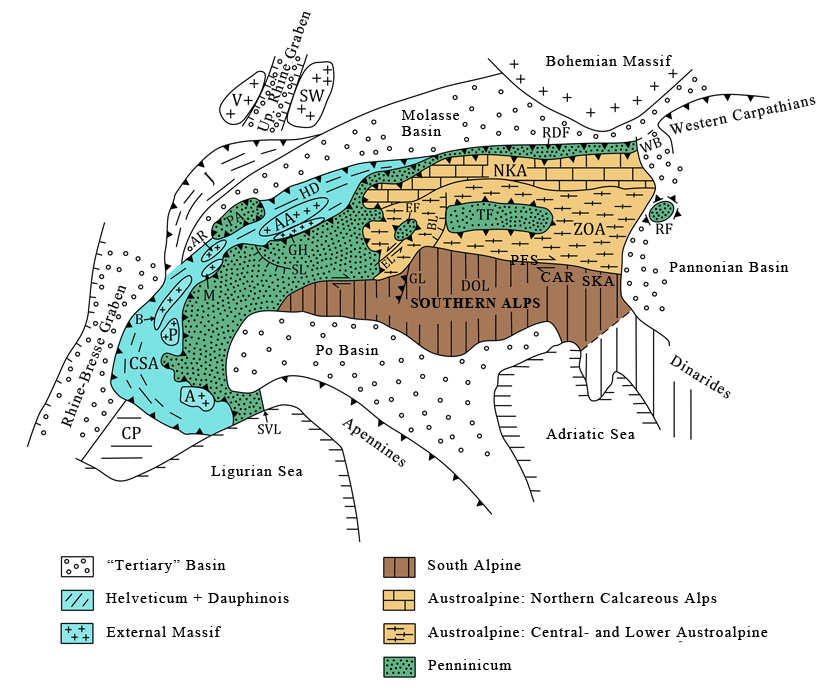FEATURED AND RECENTLY ADDED FOSSILS
Naziv vsebine
GEOTECTONIC SETTING OF THE SOUTHERN KARAVANKS
The European Alps comprise Western, Central, Eastern and Southern Alps. The Southern Alps are distinctively separated from the rest by east-west trending longitudinal valleys coinciding with and being morphological expression of the Periadriatic Fault System (PFS). The Alps have been structurally subdivided into north- and westward thrusted juxtaposed (from top to bottom) Austroalpine*, Penninic and Helvetic superunits, each representing its own set of nappes north of the PFS, and Southern Alpine superunit characterized by south directed thrusts and reverse faults south of the PFS (Froithzheim, 2012). This superunit superunit coincides with the Southern Alps, encompassing the Southern Karavanks. (*Australpine means Eastern Alpine because Austroalpine set of nappes extensivelly outrcrops in the Eastern Alps).

Fig. 1: Tectonic subdivision of the Alps (slightly modified after Froithzheim, 2012).
The Southern Karavanks are a morphological and orographic continuation of the Carnic Alps, characterized by nearly identical geological structure and deformation patterns (Diener, 2002). They are delimited along their northern margin by the Periadriatic Fault System, which is an array of late orogenic faults that accommodated dextral transpression during oblique indentation by the southern Alpine crust (Handy et al., 2005), whereas the Gailitz and Sava Faults represent their western and southern structural borders respectively. To the East, the Southern Karavanks subside beneath the Tertiary sediments of the Pannonian basin.
During the second phase of the Alpine orogenesis (Eocene-Recent) convergence of the European and the counterclockwise-rotating African plate led to 250 km right-latteral-slip along the east-west trending, several kilometers wide Pariadriatic Fault System zone and formation of a perpendicular to the fault system transpretional tectonic structure, composed of divergent thrust system i.e. a flower structure. Exhumation of deeply rooted, contactly-metamorposed regional-metamorphic rocks in the central part of the fault-zone was coupled by north- and southward thrusting of nappes of overlying Ordovician - Eocene sedimentary rocks, forming geotectonic units of the Southern and Northern Karavanks respectively.
Differnet magnitudes of lateral-slip along the Periadriatic Fault System (250 km) and subparalel Sava Fault (90 km) led to enormous stress-accumulation whereas the subsequent stress-releasing resulted in formation of (sub)paralel tectonic lenses (Brenčič & Poltnig, 2008; Poltnig & Herlec, 2012 and references therein).


